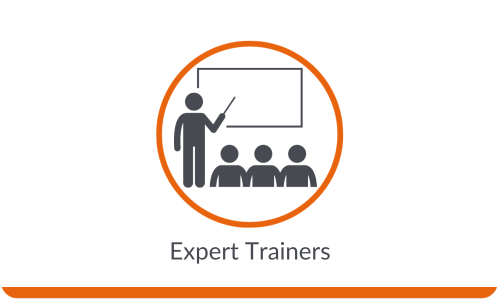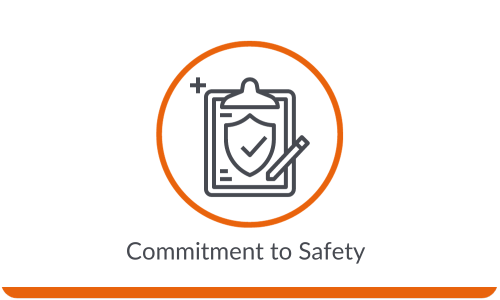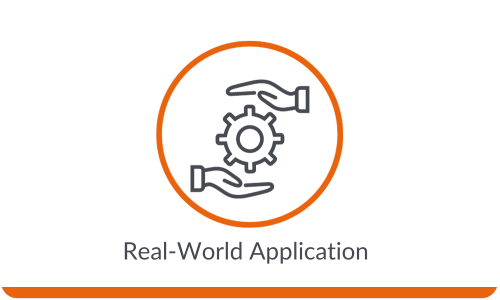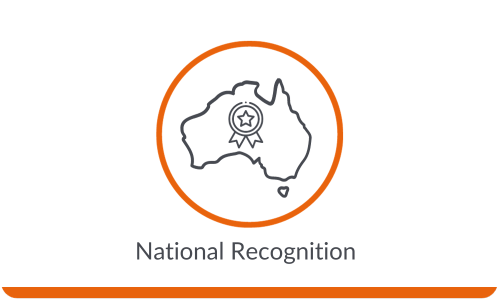Tower Rescue Training
REQUEST A GROUP TRAINING QUOTE NOW!
What people are saying
Overview | Tower Rescue Training
Our Tower Rescue Training programme is a specialised course designed for individuals who face the challenge of conducting rescues on towers and similar structure. This course is essential for professionals working in telecommunications, wind energy, construction, and emergency response teams who are required to perform technical rescues on towers, masts, and tall structures.
This Tower Rescue Training offers a comprehensive curriculum that covers all aspects of tower rescue, including risk assessment, use of rescue equipment, and execution of rescue procedures in a variety of challenging scenarios.
Participants will be equipped with the knowledge and hands-on experience needed to safely navigate the complexities of tower rescues. Through a combination of theoretical instruction and practical exercises, learners will master the skills required to assess situations quickly, manage risks effectively, and execute rescue operations with precision and confidence. Our expert instructors, with extensive experience in high-angle rescue operations, provide personalised guidance to ensure that each trainee gains the proficiency needed to tackle real-world challenges.
Choosing our Tower Rescue Training programme not only enhances your teams skill sets but also significantly contributes to the overall safety of operations involving work at heights. Participants will emerge from this Tower Rescue Training as competent rescuers, capable of performing high-risk tower rescues efficiently and safely, thereby reducing the risk of accidents and injuries.
Whether you are looking to refine your teams existing rescue skills or starting from scratch, our Tower Rescue Training provides the essential knowledge and confidence to perform tower rescues competently and efficiently.
Customised Tower Rescue Training for Industry-Specific Requirements
Our Tower Rescue Training programme is expertly tailored to meet the unique challenges and safety requirements of workers across a diverse range of industries. Recognising that each sector presents distinct scenarios and risks associated with working at heights, we have meticulously designed our training modules to address these specific needs. Here’s how our Tower Rescue training is adapted to ensure relevance and effectiveness for key industries:
- Telecommunications: Our course focuses on the unique challenges of climbing and working on mobile phone towers, emphasising rescue techniques specific to these structures.
- Wind Energy: We provide specialised training for technicians on wind turbines, covering the complexities of rescues in remote locations.
- Construction: Tailored for the construction industry, our training includes rescue scenarios common on building sites, bridges, and high-rise structures.
- Utilities: Customised for utility workers, the programme covers rescues from electricity and telecommunications poles and towers, addressing the specific hazards of the utility sector.
- Oil and Gas: Our training addresses the challenges faced by workers on offshore platforms and drilling derricks, with a focus on safety protocols in the oil and gas industry.
- Maritime: Tailored for maritime settings, including lighthouse maintenance and tall ship masts, ensuring crew members are prepared for at-height rescues at sea.
- Aviation: Customised for aviation maintenance personnel, the course covers rescue operations for control towers and airport infrastructure.
- Adventure Sports and Recreational Facilities: We ensure staff operating high ropes courses, zip-lines, and climbing walls are adept at rescuing participants safely.
- Military and Defence: The training is adapted for military personnel, covering operations that involve scaling structures.
By enrolling your team in our Tower Rescue Training, you ensure that your team is not only prepared to face the challenges specific to your industry but also equipped with the skills to perform rescues safely and efficiently. Our commitment to providing industry-specific training means your workforce will be proficient in executing rescue operations, enhancing safety and compliance across your operations.
PROGRAM DETAILS
Students who are deemed competent will receive a Statement of Attainment, which is recognised under the Australian Qualifications Framework. This training is nationally recognised:
Intrinsic Safety Pty Ltd (RTO45803) is responsible under the National Vocational Education and Training Regulator Act 2011 for the quality of the training and assessment being delivered in this course and for the issuance of all AQF certificates.
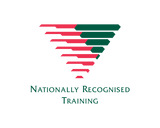
Course Fees
- Group Bookings: Contact us to discuss a customised quote.
Refunds & Fee Protection
- Your Guide to Policies: For detailed information on refunds and fee protection, please consult our Pre-Enrolment Participant Handbook.
Payment Information
- Group Bookings: Custom payment solutions for every team. We’ll work with you to set up terms that align with your needs and ours.
This course can be delivered/assessed in the workplace or at a facility organised by Intrinsic Safety Pty Ltd (RTO 45803).
Course Duration & Modes
- Face to Face Training: 2-day (16-hour) intensive, hands-on session.
- Blended/Refresher Training: Mix of online pre-learning and 1-day (8-hour) practical session, ideal for skill updates.
Each format is tailored to different learning styles and schedules, ensuring effective and efficient Tower Rescue Training.
Our detailed course outline ensures a thorough grasp of:
General Introduction and Safety Overview:
- Introduction
- Individual Safety Considerations
- Individual Health And Fitness
Tower Specifics:
- Types Of Towers
- Tower And Foundation Inspection
Regulatory and Organizational Framework:
- Regulatory Requirements
- Organisational Policies And Procedures
- Safe Work Procedures
Pre-Climb Preparation:
- Ground Crew
- Pre-Climb Safety Meeting/Inspection
- Tower Climb Safety Rules
- Key Terminology And Definitions
Incident Response and Communication:
- Initial Incident Notification
- Enroute Information Updates
- Tower Rescue Considerations
- Securing The Scene
- Incident Scene Preservation
- Common Tower Climbing Hazards
Hazard Assessment and Safety Techniques:
- Hazard Assessment
- Fall Factors
- Work Positioning
- Climbing Methods
Equipment Use and Safety:
- Twin-Tail Lanyards
- Lad-Saf Systems (Cable Arrestors)
- Vertical Lifelines
- Fixed Ladder Climbing Methods
- Rescue Equipment
Rescue and Emergency Planning:
- Emergency And Rescue Planning
- Fall-Protection Plans
- Rescue Planning Best Practice
- Risk Management During Heights Rescue
Rescue Operations and Techniques:
- Continuous Situational Awareness
- Applying Risk Controls
- Environmental Factors Impacting Rescue
- Incident Size Up
- Rescue Team Leader Size Up Considerations
- Rescue Team Roles
- Internal Support
- External Agency Support
- Operational Briefing
- SMEACSQ Operational Briefing Format
- Rescue Communication Methods/Techniques
- Whistle Signals
- Progress Reports
- C.A.N. Abbreviated Progress Reports
- Rescue Techniques
- Rescue Technique – 1 Rescuer Abseiling
- Rescue Technique – Direct Lower To Ground
- Rescue Technique – Deflection Method
Personal Protective Equipment and Knots:
- Personal Protective Equipment (PPE)
- Proper Use And Maintenance Of PPE
- Knots
- Rope And Knot Terminology
- Knot Safety
- Knots And Rope Strength
- Common Knots Used In Heights Rescue
Rope Management:
- Ropes
- Rope Materials
- Rope Construction
- Rope Elongation
- Rope Care
- Preventing Damage To Ropes
- Inspection Of Rope
- Retirement Of Rope
- Rethread Figure Of 8
- Figure 8 On The Bight
- Figure 9 On The Bight
- Double Figure Of 8 On The Bight
- Alpine Butterfly
- Stopper Knot
Casualty Management:
- Casualty Assessment And First Aid
- Hygiene Precautions
- Casualty Management
- Casualty Assessment
- Communicating Casualty Information
- Casualty Handling
- Casualty Packaging And Extrication
- Lifting And Carrying Casualties
- Actions On Rescuer Injury
- Stretchers And Lifting Devices
Post-Operation Procedures:
- Recovering And Accounting For Equipment
- Equipment Cleaning And Maintenance
- Equipment Storage
- Equipment Maintenance
- Equipment Decontamination
- Operational Debrief
- Incident Log
- Incident Report
Assessment Methods
We provide a well-rounded assessment process that encompasses both practical tasks and scenarios, as well as written theory assessments, throughout the training. This comprehensive approach ensures a thorough evaluation of your skills and knowledge, allowing you to demonstrate your competency in real-world application and theoretical understanding.
Specific assessment tasks to be undertaken include:
- Knowledge Assessment
- Prepare for Tower Rescue – Practical
- Perform Ground Based Tower Rescue – Practical
- Perform Ground Based Tower Rescue with Deviation – Practical
- Perform Tower-Based Tower Rescue – Practical
Entry Requirements
- Pre-Course Study: Depending on the course mode, online pre-course work may be required before the face-to-face session.
- Online Study Requirements: A computer, smartphone, tablet, or similar device with internet access is needed for online or pre-course studies.
For comprehensive details on your rights and responsibilities, including our complaints and appeals process, kindly refer to the Pre-Enrolment Participant Handbook on our website.
We’re committed to fostering an enriching learning environment. Key to this is understanding your Language, Literacy, Numeracy (LLN), and Digital Literacy skills, essential for your course success.
LLN Evaluation Verification
- Assessing Your Needs: Check if you need an LLN Evaluation based on your prior qualifications through our LLN Evaluation Verification Form.
Digital Literacy Checklist
- Embracing Technology: Complete our Pre-Enrolment Digital Literacy Checklist to help us tailor our support to enhance your digital skills.
Formal LLN Evaluation
- Tailored Support: If required, you can complete our Formal LLN Evaluation online, helping us understand your skill levels for personalised support.
These tools ensure you start your course with all the support you need for a successful learning journey. For any questions or extra assistance, feel free to contact our support team at [email protected].
REQUEST A GROUP TRAINING QUOTE NOW!
Pre-Enrolment Participant Handbook
Intrinsic Safety Pty Ltd (RTO 45803) offers a detailed pre-enrolment participant handbook for those interested in our programs. This handbook helps you understand your rights when you enrol with us.
We advise you to read and understand the handbook thoroughly before enrolling in any nationally accredited training program offered by Intrinsic Safety Pty Ltd. This ensures you are well-informed about the enrolment process and the program details.
If there is anything in the handbook where you require further clarification, please do not hesitate to call Intrinsic Safety on 1300 990 336 and one of our friendly team members will be more than happy to assist you.
LLN and Digital Literacy
You can complete these activities, using the links below now, or once you have enrolled:
- LLN Evaluation: It’s important for us to understand your language, literacy, and numeracy skills to best support your learning. Please complete the LLN Evaluation Verification, accessible HERE.
- Digital Literacy Checklist: To ensure you’re prepared for our digital learning environment, please fill out the Pre-Enrolment Digital Literacy Checklist available HERE.

Now is the time to get qualified.
discover our other training courses
Intrinsic Safety is an established, trusted, quality training provider with an extensive list of corporate clients and individuals who have attended our training courses over the years in a variety of learning areas:
REQUEST A GROUP TRAINING QUOTE NOW!
Ready to start your training with Intrinsic Safety?
Enrol Now
Find and enrol in the course you need to complete today.
Call Us
Speak to one of our Training Specialists Monday – Friday from 7:30am – 5pm (AEST).
Submit an Enquiry
Not in a rush? Simply submit your enquiry and we look forward to speaking with you shortly.
Locate Us
Looking for our location details? We deliver courses throughout Australia.
Why Study with Us?
